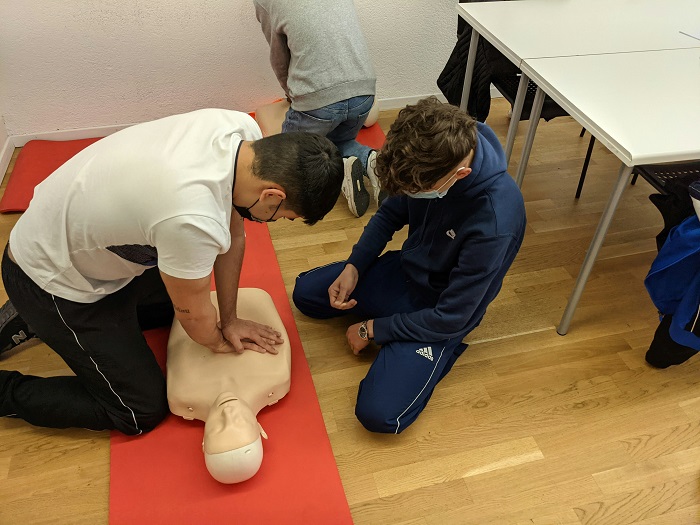Mastering CPR Compressions: Achieving the Right Compression Depth for Effective Life-Saving
In moments of crisis, having the knowledge and skills to perform CPR can mean the difference between life and death. However, it’s not just about knowing CPR; it’s about doing it effectively. One crucial aspect of performing CPR is mastering the correct compression depth. Knowledge of CPR is not enough to save a life when needed. People need to know more about chest compressions and the right depth. Learn about the importance of CPR compressions and how to achieve the correct CPR compression depth for optimal life-saving outcomes.
“At the American CPR Care Association, we understand the critical importance of CPR compressions in saving lives. Our mission is to empower individuals with in-depth knowledge of CPR. Each course makes you an expert at delivering the right compression depth. Our comprehensive CPR training programs use innovative training tools. We’re committed to equipping rescuers with the confidence and competence to respond confidently in emergencies. Together, let’s make a difference and save lives through high-quality CPR compressions,” said Hunaid Hakkam, CEO of the American CPR Care Association.
Understanding CPR compressions
Cardiopulmonary resuscitation (CPR) is a life-saving technique used to revive individuals experiencing cardiac distress. CPR involves a combination of chest compressions and rescue breaths. Compressions as well as CPR compression depth are pivotal in maintaining blood circulation and oxygenation for vital organs.
The importance of compression depth
Effective CPR compression depth is essential for generating sufficient blood flow to vital organs. Studies recommend a compression depth of at least 2 inches (5 centimeters) for adult patients and at least one-third the depth for children. Proper compression depth adequately compresses the ribs to pump blood throughout the body, increasing the chances of survival.
Achieving the right CPR compression depth
- Positioning: Begin by placing the heel of one hand in the center of the victim’s chest. For adults, position your shoulders directly over your hands, and for infants and children, use the heel of one hand or two fingers, depending on the child’s size.
- Compression technique: With straight arms, press down firmly on the chest at 100 to 120 compressions per minute for adults, children, and infants. Allow the chest to come up between compressions to maximize blood flow.
- Depth adjustment: To achieve the recommended compression depth, go for a depth of at least 2 inches (5 centimeters) for adult patients. For pediatric patients, the depth should be one-third. Use your body weight to apply adequate pressure, ensuring the chest compresses sufficiently with each compression.
- Feedback devices: Consider utilizing feedback devices, such as CPR training manikins or automated external defibrillators (AEDs) with real-time CPR feedback, to accurately monitor compression depth and rate. These devices provide visual and auditory cues to guide rescuers in performing high-quality CPR.
Training and practice
Mastering CPR compressions requires regular training and practice to ensure proficiency and confidence in performing this life-saving technique. Consider enrolling in a CPR certification course offered by The American CPR Care Association. The courses provide hands-on training and practical experience in performing CPR compressions under the guidance of certified instructors.
About the American CPR Care Association
The American CPR Care Association believes in bridging the gap in CPR certification. Their user-friendly online platform simplifies studying, offering expertly designed courses. Each CPR course provides a certification valid for two years, with the option for future recertification with ACCA. People receive personalized support throughout the process.
Enroll in CPR certification online today to ensure you’re always ready to save a life.
Visit the website at https://cprcare.com/ or contact at +1-888-277-7865 for further details. You can also reach out to learn more about CPR certification depth through our programs.
Email: info@cpraedcourse.com
Telephone: 1-888-277-7865
Fax: 214-614-9164




